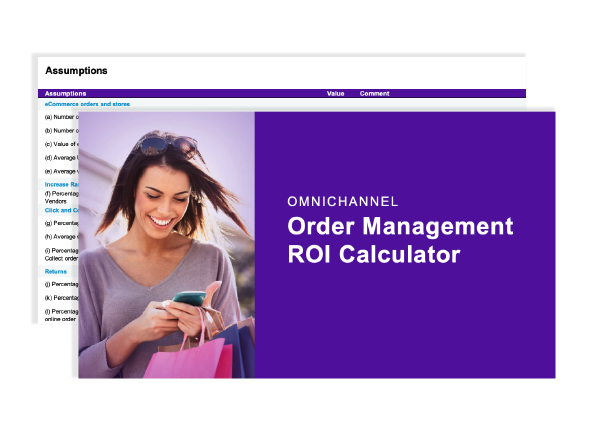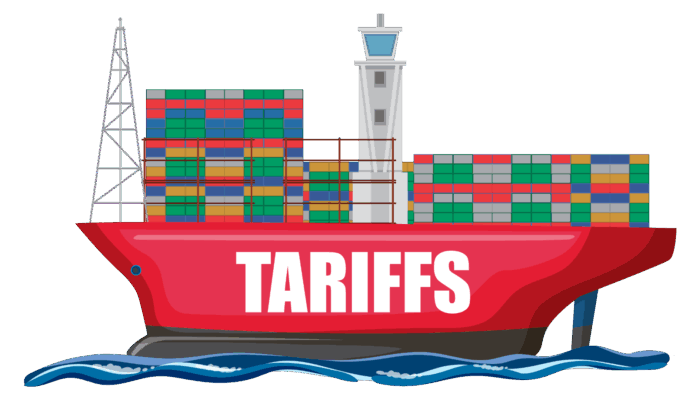Typically when a brand wants to talk to us about an Order Management System (OMS), it’s because they have inventory accuracy issues, or they want to do ‘Ship from Store’, or their Click and Collect lead times are too long. Today I want to talk to you about another benefit of an OMS people don’t always think about.
A couple of years ago I worked with a global home furnishings brand. They were fielding so many customer calls about ‘order status’ that it taxed their system and reduced their margins. Their story is a great example of the benefits of an OMS and how it can resolve customer issues without them ever having to pick up a phone.
Why was their call center overwhelmed?
For this brand, 80% of the calls they received were specifically about order status. Customers wanted to know where their order was and when they would receive it. If the order was in process at the warehouse, Call Center agents could look up real-time order status. However, if the order was with a carrier for delivery, the Call Center was blind. They had no visibility into order status. To better understand the problem, we conducted a site visit.
When we arrived at the Call Center, we discovered that each agent operated three different screens at their workstation. Each screen displayed at least one or two different applications used to track orders. Why so many applications? They had to use a different one for each platform where products were sold: their own website, 3rd party retailers, marketplaces, even their own Call Center.
Each inquiry began with the customer detail and order number, then the agent had to turn to one of the applications for information. If a product was sold through a marketplace, the agent had to use the tool specific to that marketplace. If the product was in the warehouse, they had to use a different application that was highly complex. And if it was with a carrier, whether or not the agent could get accurate information depended on the carrier.
Processing returns was even more difficult
When processing a return, the procedure was even more difficult. Not only did the agent have to interface with all the different systems, once an item was returned, its status completely fell out of the system. To process a refund, the agents had to go to a physical room in the Call Center where only one manager was authorized to issue the refund. To do that, she had to enter all of the customer information again before issuing the refunds. It functioned essentially like a POS cash system. In other words, totally inefficient.
The cost of high Call Center volume
As the brand estimated the cost of this entire process, they determined that each phone call cost 1-2 Euros. With two offshore Call Centers handling the volume, they processed 30-40K calls per month. As a result, any solution that could reduce that volume could save the company up to almost 1M Euros per year.
Why custom solutions are not the answer
There are a few lessons we can learn from this story. The first is that many brands—including this one—tried to approach the problem as an internal IT issue. Unfortunately, when dealing with multiple software applications, building a custom orchestration layer with internal resources often fails. In fact, they tried three times. Each time their internal IT teams weren’t able to dedicate the time needed to build a custom solution. They had too many other responsibilities.
The second lesson is that even if you build a custom solution, it often can’t scale. Typically, custom solutions address current integration issues, but are not architected to provide future flexibility. What they really needed was a true omnichannel solution. One specifically designed to connect all their systems and create a single view of customer orders. These systems would include ecommerce platform, marketplaces, payments, customer service, notifications, logistics and carrier systems.
Lastly, they lost a lot of time. They spent over two years trying to develop a solution that didn’t work out. So not only did it cost money, they also lost the opportunity to provide customers with a better experience during that time. With a purpose-built, cloud OMS like Fluent Order Management, a brand can start seeing value within 4-6 months.
Automated customer service
Now imagine that a scalable system could pull all this siloed data together. In near real-time. Customers could look up order status online, or receive regular notifications…. automatically. So you not only reduce call volumes but have happier customers too. And for those customers who do need to call, they’ll have their calls resolved faster.
And when it comes to returns, an OMS can help automate processes and facilitate reverse logistics too.
Benefits of an Order Management System
When you’re evaluating whether an OMS is right for your organization, it’s important to look at all the areas of your business that will benefit. Not just customer service and fulfillment and logistics, but inventory management and store operations too. You’ll also want to build a business case. One based on data. Yet sometimes it’s hard to quantify the Return on Investment (ROI) on process improvements. To help you with this, we’ve put together an Omnichannel Order Management ROI Calculator that identifies key areas where, based on our experience, retailers and brands see the most gains. While it includes some sample numbers, really it’s a framework—a tool to help you get started—we hope you find it useful.




